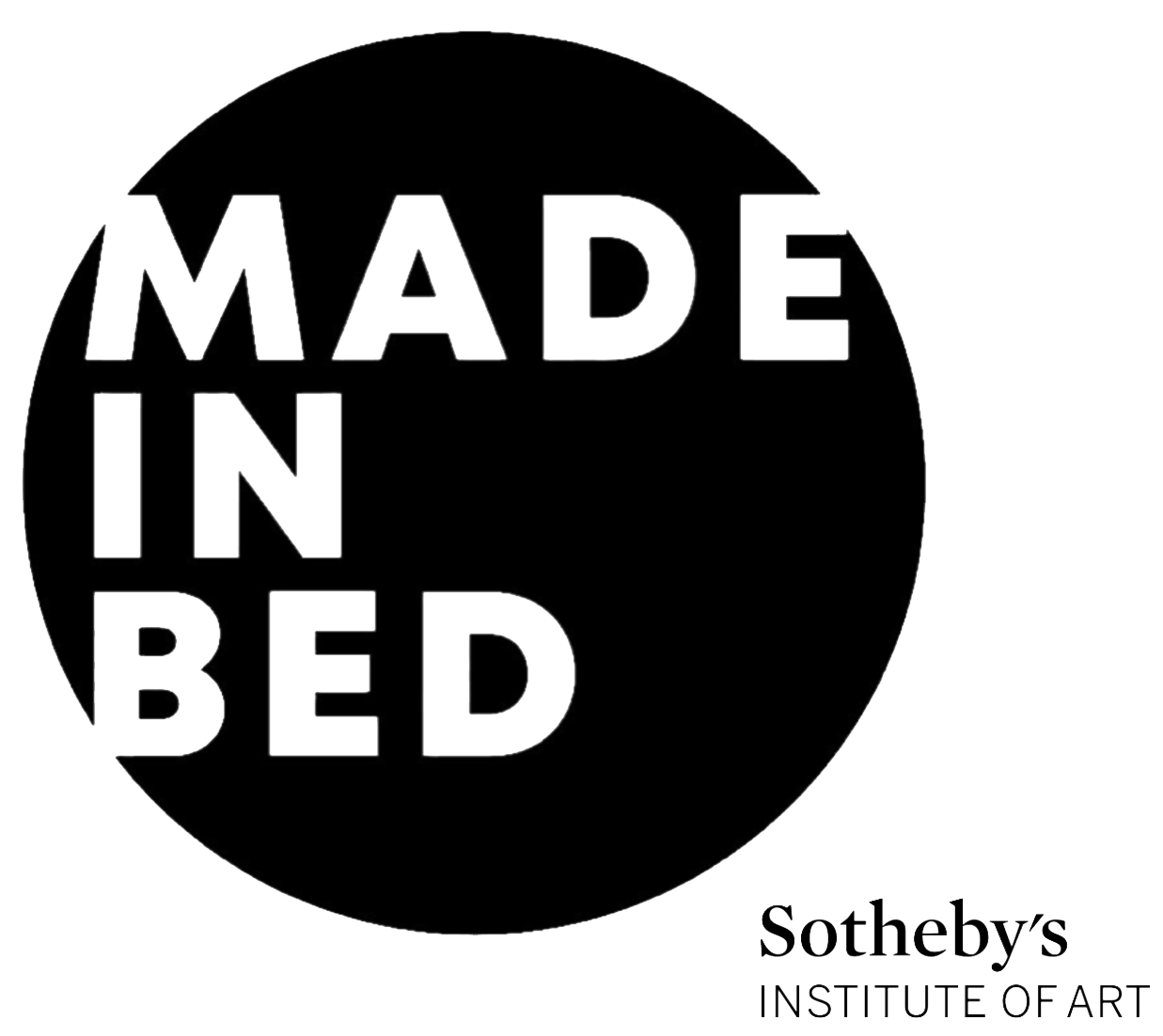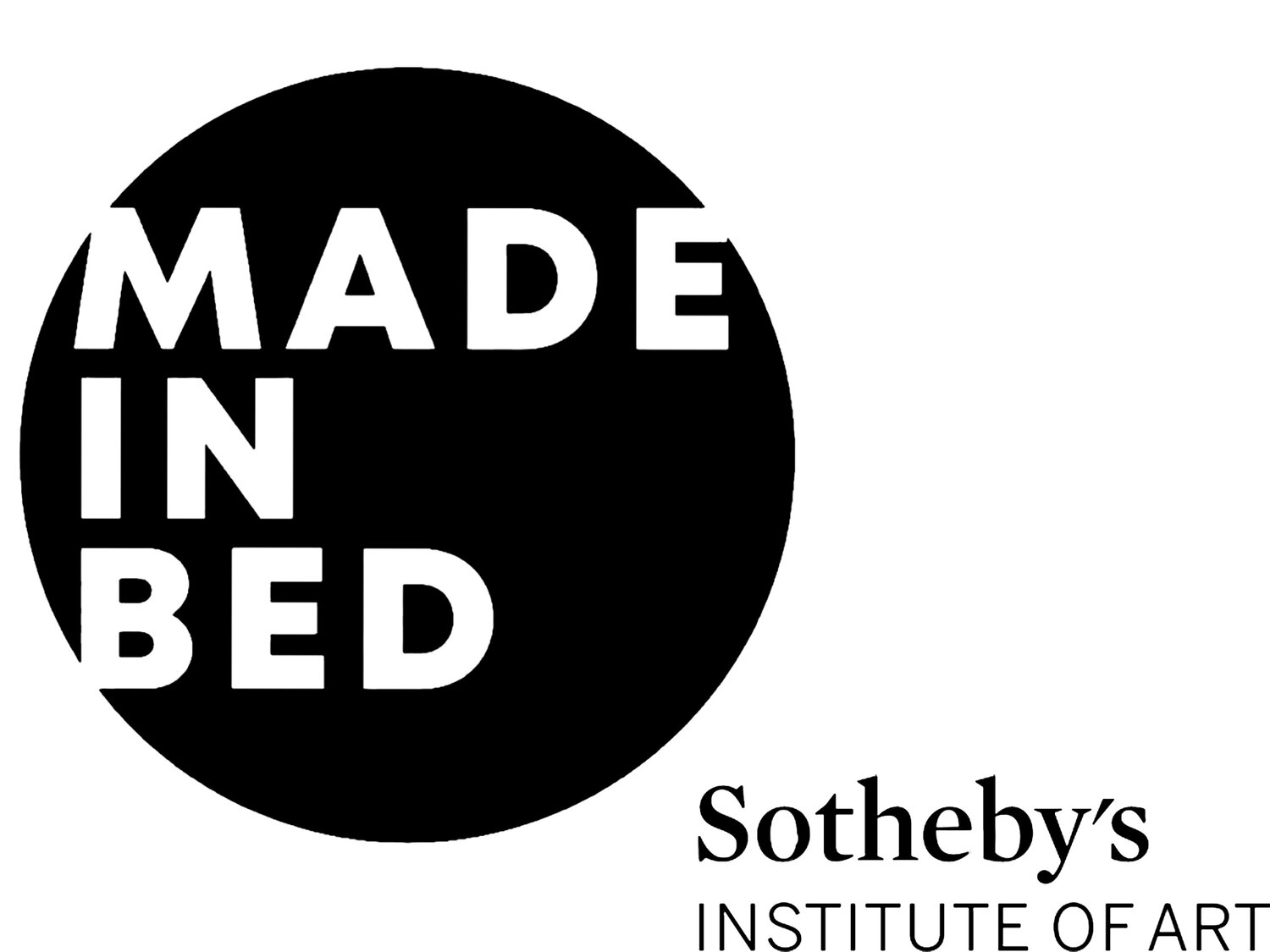From Gatekeeping to Guidance: Alexandra Steinacker-Clark’s Vision for the Future of Art
This year, headlines about the art world have sent people into a frenzy: between gallery doors permanently closing, Trump’s tariffs, and the perceived impending crash of the art market, it has seemed like the sector is in flux. In the midst of this, institutions built on centuries of exclusivity and gatekeeping are showing cracks, while new generations are demanding care, transparency, and equity. In this moment of change, it feels apt to borrow the metaphor of the doula—one who guides the passage between worlds, providing emotional, value-driven support and guidance.
Bryony Ella, Stand of The Sun, 2025, Peformance. Photo Courtesy: Alberto Romano
If, as the metaphor has it, the current art world is an old structure in need of a death doula, then All About Art podcast host Alexanda Steinacker-Clark is part of the army of doulas on the other side of the threshold—guiding the emergence of a new generation.
Alexandra Steinacker Clark. Photo Courtesy: Ines Wurm
Through the All About Art podcast, the American-Austrian art historian, writer, and curator has transformed the show into one of the most widely followed in its field, with listeners in over 115 countries. Yet, its impact extends beyond streaming charts. Through candid conversations and the community she has nurtured, Steinacker-Clark is quietly reshaping how people imagine entering and sustaining themselves within the notoriously opaque world of art.
When asked what she hopes is ‘dying’ in the traditional art world, Steinacker-Clark points to what she calls the ‘passion tax’. “Art and culture are essential, and we should be paid for the work we do,” she insists. The old logic—that unpaid internships, unpaid panels, and unpaid ‘exposure’ are rites of passage—remains widespread. Even eight years into her career, with significant expertise behind her, she is still asked to work for free.
Vincent van Gogh, La Chambre à Coucher, 1888, Oil on canvas, 72 × 90 cm. Photo Courtesy: CC BY-SA 3.0
If the passion tax is what she hopes to bury, transparency and fair pay are what she hopes to bring to life. In her vision of a more just art world, respect for artists and arts workers would become intrinsic, not incidental. And crucially, she believes the next generation—today’s students, interns, and emerging practitioners—are key to building it.
When Steinacker-Clark launched All About Art in 2021, she was about to graduate from her master’s degree in Arts Administration and Cultural Policy at Goldsmiths. Having worked part-time at Sotheby’s Auction House, she had seen up close the allure of the commercial market, but realised it wasn’t for her. What she lacked, however, was a clear sense of what other possibilities existed.
“I knew there were a lot of different jobs in the arts,” she recalls, “but I couldn’t fully gauge what they entailed or how they differed from one another—and I couldn’t find a good enough resource to give me that information. That’s when I started interviewing people, just talking to my peers about what they were doing. By the end of the first year of running the podcast, I was sitting in a museum director’s office asking her about her career path and how she steered an institution through a pandemic.”
Alexandra Steinacker-Clark, Photo Courtesy: Jolly Schwarz
What began as an attempt to map the terrain for herself, has since become a resource for thousands of others navigating the same questions. The podcast now sits within the top 10% of most-followed and most-shared podcasts worldwide, with a listenership spanning from the UK and US to Germany, Austria, France, and more..
One reason for the podcast’s success is its range. “I describe it as being for everyone from insiders to the simply curious,” Steinacker-Clark explains. Weekly episodes alternate between in-depth interviews with cultural practitioners—museum directors, curators, entrepreneurs, artists—and solo episodes where she unpacks recent exhibitions, book releases, or wider issues shaping the sector.
Alexandra recording an episode of All About Art. Photo Courtesy: Pat Cahill
This mix allows the show to remain both accessible and rigorous. “My content ranges from hot takes on art world happenings to exhibition and book reviews,” she says. “I keep it open, because that’s what makes it fun and educational—not only for my listeners, but also for me as the producer and host.”
Steinacker-Clark’s sensitivity to accessibility and breadth has roots in her own education. Studying History of Art at UCL gave her strong foundations in analysis, writing, and communication, but she found the curriculum overwhelmingly Western-centric. “It stayed, for the most part, within the remit of fine art, rarely venturing outside of those lines,” she recalls. Courses that tried to widen the scope were often disrupted by strikes or the pandemic.
Her master’s at Goldsmiths, however, was transformative. “It made me think about the cultural industries from a wider perspective,” she says. “We looked at global policies in Asia, South America, and Nordic countries. We covered regeneration, public art, fundraising, cultural identity, social class and taste in connection to inequalities in the arts. It taught me not only how art impacts society today, but also how governments, organisations, and individuals engage with culture now.”
Lakwena Maciver, The Power of Girl, Mural for Nike Women Shoreditch. Photo Courtesy: Dalziel & Pow
This widening lens shapes her podcast. Guests have included author Enid Tsui speaking about Art in Hong Kong, a artistic director Deep Kailey curating exhibitions through Sikh philosophy, a philanthropist supporting a museum in Cape Town, and a man who discovered his love for art while serving a 14-year prison sentence. “I am interested in stories outside of a variety of canons,” Steinacker-Clark says. “Going beyond the Western canon remains a main consideration in the way I approach my projects.”
Her 2022 conversation with Alayo Akinkugbe, founder of A Black History of Art, was emblematic of this approach: challenging dominant narratives not through tokenistic inclusion but through genuine curiosity and dialogue.
If widening the canon is one way Steinacker-Clark challenges the status quo, confronting money talk is another. The art world is notoriously resistant to financial transparency, a tendency she traces to its historically privileged roots and to the market’s reliance on discretion. Even within academia, she recalls, financial awareness was discouraged.
“When I was doing my undergraduate degree, a professor—who was also a curator at a large London museum—criticised the formation of the Art Business Society at my university,” she remembers. “They literally told me they didn’t approve of it. Little did they know I had been elected president of the society the following year. That kind of attitude ignores the barriers some students face, and how something like that society could make a difference.”
To counter this resistance, Steinacker-Clark has expanded her work beyond the podcast. Since 2022, she has run All About Art networking events, which in October 2024 grew into NXT GEN, a joint membership programme with the Association of Women in the Arts (AWITA). Designed for arts professionals within the first five years of their careers, NXT GEN offers workshops, toolkits, and mentorship. Current programming includes a Job Hunt Toolkit series covering everything from “Getting Paid Right” to “Career Moves—Knowing When an Opportunity Is Right for You.”
Launch Event NXT GEN at the ICA. Photo Courtesy: Jennifer Moyes
What, then, does Steinacker-Clark say to those just entering the field, facing the same unpaid internships and uncertain futures she once did?
“There’s the advice I would love to give: know your worth, and refuse to work for free,” she says. “If we all refused, there would be no one working for free. But there’s also the advice I realistically need to give: weigh up if the opportunity offers something else—mentoring, community, connections, or valuable experience you can use to leverage for a paid position down the line. Can you balance it with a paid job if you need to? And set clear boundaries about what you’re willing to compromise on.”
This pragmatism reveals both the difficulty of dismantling entrenched systems and the incremental strategies required to navigate them. For Steinacker-Clark, the task is not to accept exploitation, but to negotiate within a flawed system while laying the groundwork for something better.
When asked what a more just art world would look like, Steinacker-Clark’s answer expands outward. It is not only about the sector itself, but society at large. “I believe that having society acknowledge how creative thinking, empathy, and expressions of thoughts and emotions through art are incredibly valuable in working towards the future,” she says.
In her vision, artists and arts professionals would be granted respect and financial stability; museums would thrive on wider public engagement; governments would increase funding; and people might choose to buy art instead of designer handbags. These shifts in social and economic priorities, she argues, would provide the resources for the next generation—already committed to diversity, equity, and inclusion—to implement lasting change.
For all her practical advocacy, what ultimately sustains Steinacker-Clark is her community and her enduring love of art. Hope, for her, is reciprocal. “Mutual inspiration—learning from people who inspire me and finding out that people are inspired by me—keeps me going,” she says.
And when doubt inevitably creeps in, she returns to Rubens’ Samson and Delilah. Standing before the canvas, she remembers why she chose this path in the first place. Far from disillusioned, Steinacker-Clark is animated by the belief that art really can change the world—and she is determined to help a new generation believe it too.
Peter Paul Rubens, Samson and Delilah, 1609-10, Oil on Wood, Photo Courtesy: CC BY-SA 3.0
If the death doula metaphor frames the art world’s transition, Steinacker-Clark embodies the qualities needed for its renewal—quietly, persistently guiding a new generation toward believing that art can indeed change the world.
Chantel Akworkor Thompson
Agents of Change Editor, MADE IN BED









